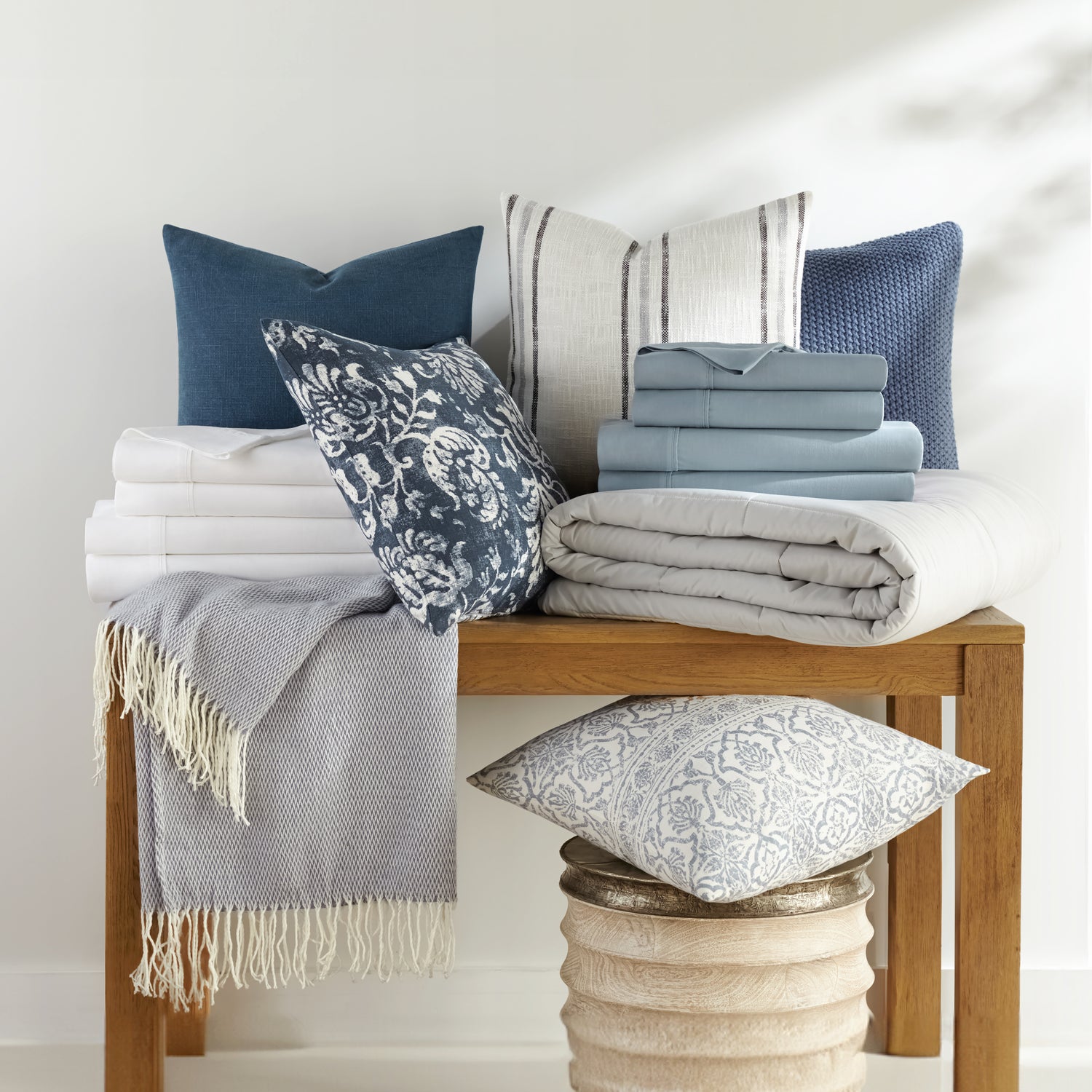Microfiber vs Cotton Sheets: Which Is Better?
Tired of tossing and turning at night because your sheets feel too hot, too rough, or just not right? The choice between microfiber vs cotton sheets could be the reason. These two fabrics dominate the bedding world, yet they offer completely different sleep experiences.
In this guide, we’ll break down softness, comfort, breathability, durability, and more. By the end, you’ll know exactly which sheet set will help you sleep better.
Table Of Contents
- What Exactly Are Microfiber and Cotton Sheets?
- Softness & Feel: Which One Wins?
- Are Microfiber Sheets Hot?
- Breathability & Temperature Control
- Durability, Shrinkage & Fading
- Care, Maintenance & Practical Use
- Cost, Value & Environmental Aspects
- Which One Should You Choose?
- Conclusion
What Exactly Are Microfiber and Cotton Sheets?
Microfiber sheets are made of engineered synthetic fibers—often polyester or polyester blends. These fibers are drawn extremely fine, so the weave is tight and smooth.
Cotton sheets come from natural cotton fibers. Within cotton, there are several types (Egyptian and Pima) and weaves (percale, sateen, poplin) that affect feel, durability, and breathability.
Pros & Cons Overview
Here’s a snapshot comparison before we dive deeper:
|
Feature |
Microfiber |
Cotton |
|
Softness |
Very silky out of the box |
Becomes softer with time |
|
Breathability / Temperature |
Tends to trap heat |
Naturally breathable and cool |
|
Durability |
Resists shrinking and fading |
Good durability, especially in high-quality cotton |
|
Care / Maintenance |
Easy care, wrinkle-resistant |
Needs more careful washing, may wrinkle |
|
Cost & Value |
Often more affordable |
Costs more than microfiber |
Softness & Feel: Which One Wins?
If you like a silky smooth feel, microfiber often wins. The fibers are engineered to feel sleek and consistent. Cotton may feel crisp initially, especially with percale weave, but after washing, it softens and develops a cozy, lived-in feel.
For many, that natural softening is more appealing over time. Cotton also offers a greater variety of hand and weave, giving you more feel options than microfiber.
Are Microfiber Sheets Hot?
The answer is yes, they can be for many sleepers. Because microfiber has a tighter weave and synthetic fibers, it tends to trap body heat and reduce airflow.
This makes it less ideal for those who run warm at night. Cotton’s natural fibers allow more air circulation and moisture wicking, so it's generally better at keeping you cool.
Breathability & Temperature Control
Cotton excels in this category. It lets air flow, it absorbs moisture (sweat) and then releases it, helping regulate your skin’s microclimate.
Microfiber resists moisture absorption and airflow more than cotton, so it can feel more “closed in.” But in cooler weather or for those who get chilly, that trait can be a benefit. Some microfiber sets are brushed or engineered for more airflow, but they rarely beat cotton’s natural breathability.
Durability, Shrinkage & Fading
Microfiber is prized for its shape retention. It rarely shrinks, it holds color well, and wrinkles are minimal.
Cotton is more vulnerable to shrinking, fading, and wear, especially lower-quality cottons. But high-end cotton, like long staple varieties, can last years with proper care.
Over time, cotton may lose strength in some weaves, but microfiber may degrade or develop pilling, depending on quality and washing.
Care, Maintenance & Practical Use
If you want minimal fuss, microfiber often wins. It dries fast, resists wrinkles, and rarely needs ironing. However, strong detergents or fabric softeners may weaken its surface over time.
Cotton demands more care: washing in cooler water, avoiding high‐heat drying, and sometimes ironing to keep crispness.
Cost, Value & Environmental Aspects
Microfiber sheet sets often cost much less than premium cotton. You can get large sets at modest prices.
Cotton’s cost varies widely. Basic cotton is on the lower end in terms of cost, while the top categories are often priced much higher.
Microfiber is synthetic and non-biodegradable, whereas cotton is a natural and more sustainable option.
Which One Should You Choose?
If you value cooling comfort and natural materials, choose cotton. If you want easy care, low cost, and wrinkle resistance, microfiber may suit you.
Here are some guidelines:
-
If you sleep hot or live in a warm climate → cotton
-
If you want fuss-free laundering → microfiber
-
If you're on a budget → microfiber
-
If you want your bedding to get better with time → cotton
-
If you want durable color and shape retention → microfiber
- If eco or natural materials matter → cotton
Your lifestyle, climate, and sleep style should ultimately guide your choice.
Conclusion
In the microfiber vs cotton sheets debate, there is no one universal winner. Microfiber offers ease, cost savings, and consistent texture. Cotton offers natural breathability, evolving softness, and comfort for hot sleepers. Because microfiber can trap heat, many will choose cotton when cooling is vital.
On the other hand, microfiber may be ideal for those wanting low maintenance. Consider your priorities, your climate, and how you sleep. Use the comparisons above to decide which sheet type will make your nights more restful.

